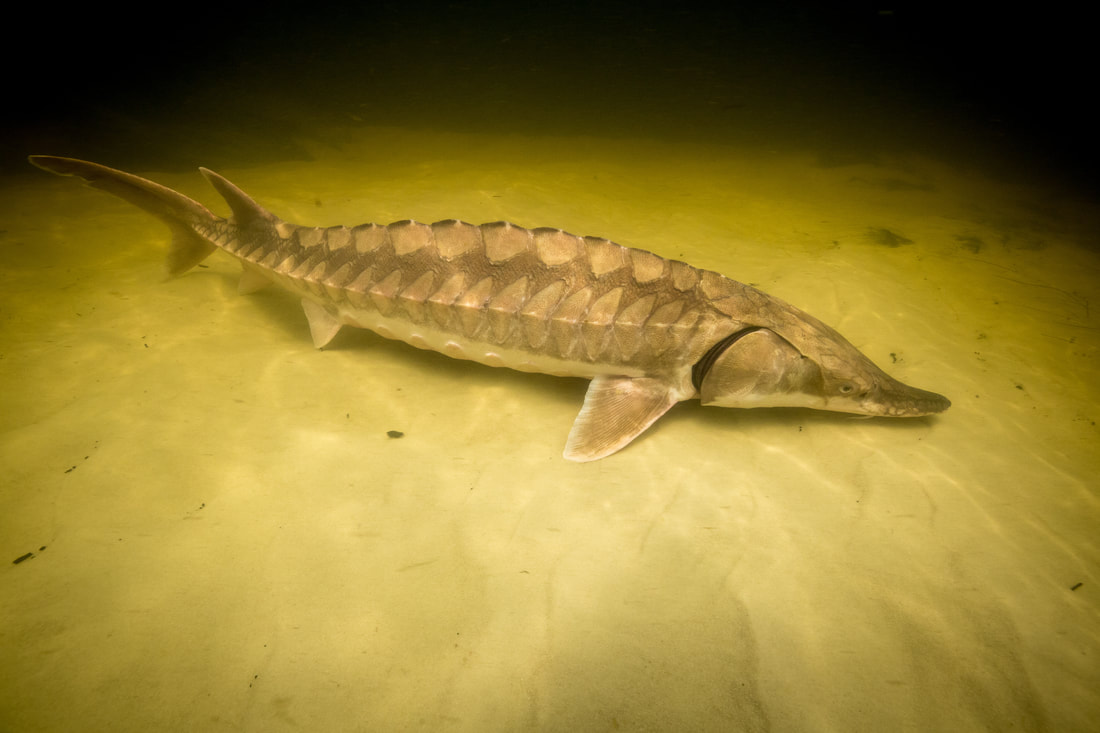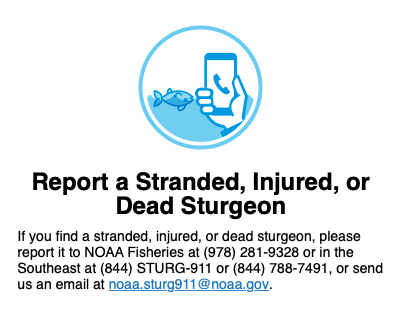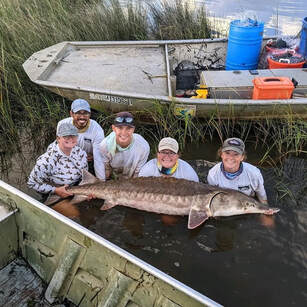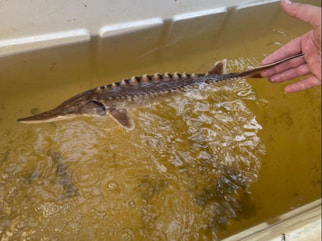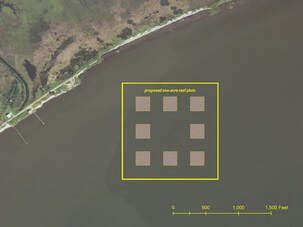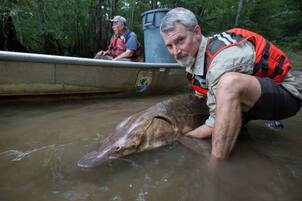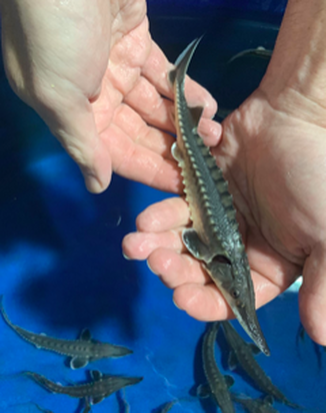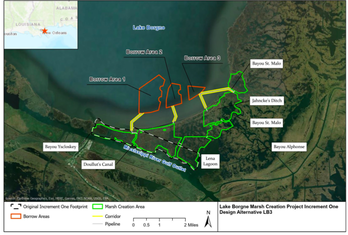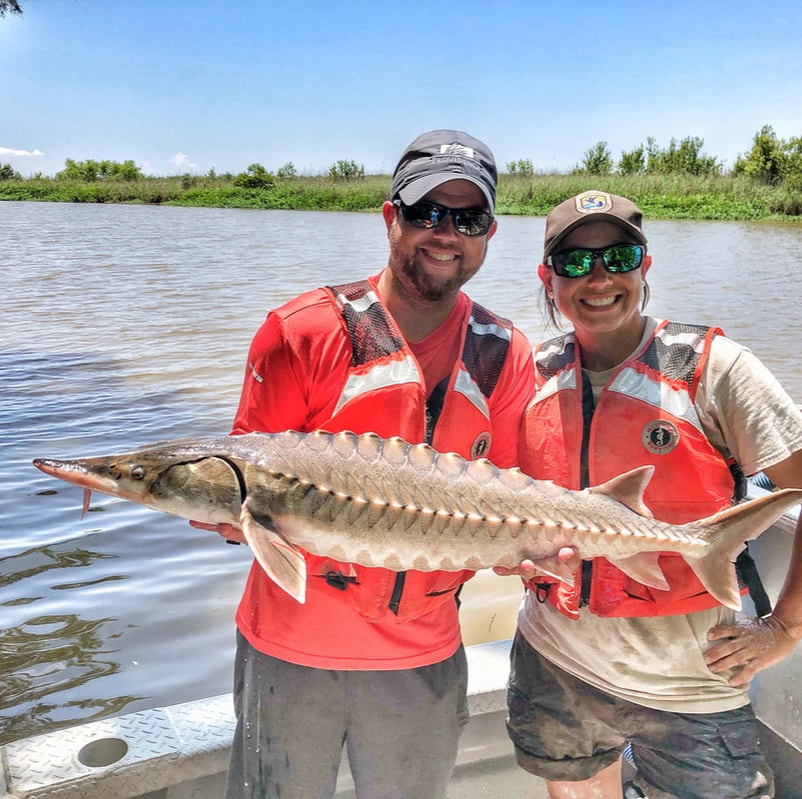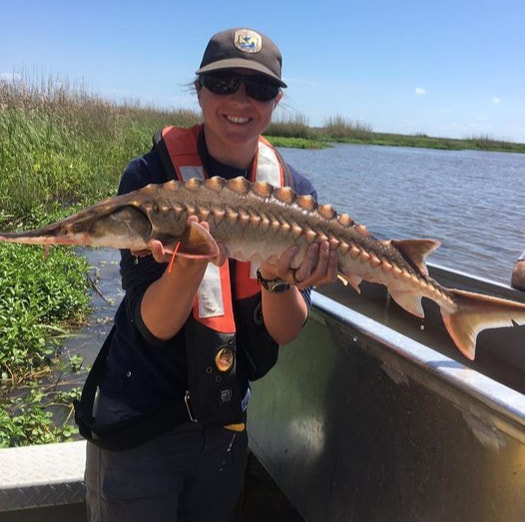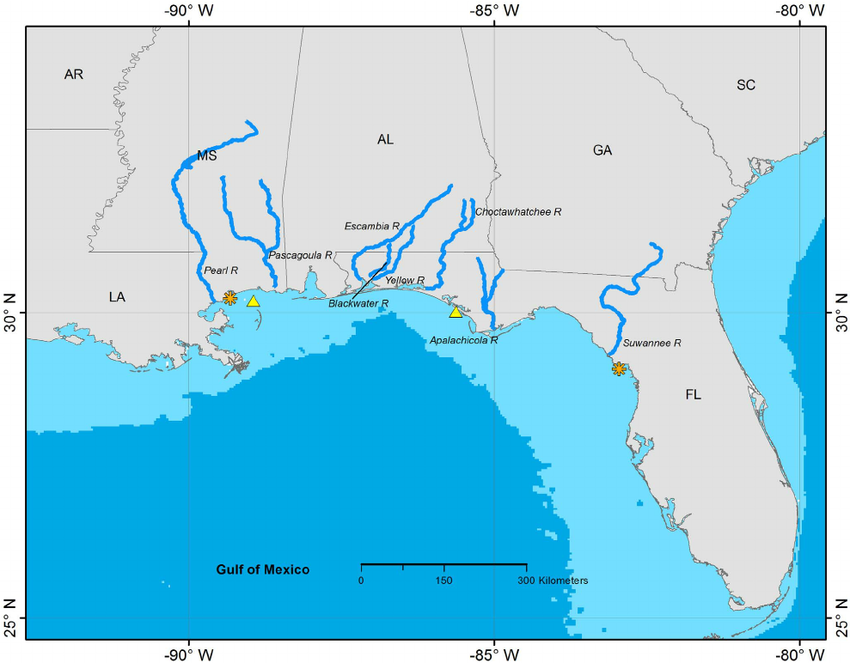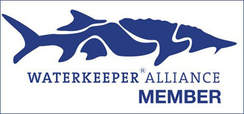GULF STURGEON
|
The Gulf sturgeon is one of 7 federally-listed "threatened" species living in the Pearl River watershed. This fish, often called a "Living Dinosaur", can live for over 60 years, grow to 9 feet and can weigh up to 300 pounds. The Pearl River is designated "Critical Habitat" for this threatened species that migrates seasonally up and down the river. Gulf sturgeon move from the Gulf of Mexico into coastal rivers in early spring and spawning occurs in the upper reaches of these rivers. Dams such as the sills at Pools Bluff and Jackson Waterworks block this species' passage to its historical spawning habitats. Current threats include habitat loss due to the construction of dams and sills which impede the ability of the species to migrate to spawning areas in the spring.
|
|
In the spring, our endangered Gulf sturgeon begin migrating up the Pearl River for spawning. Last year, sturgeon were seen as far north as the confluence of the Pearl and the Strong Rivers and the Jackson Waterworks dam. Keep an eye out for these magnificent creatures and, if you spot one, please contact the sturgeon hotline at 1-844-STURG911.
Sturgeon are federally protected in the Southeast and it is illegal to harm or impede them. |
PEARL RIVER GULF STURGEON STUDIES
NOAA Gulf Spill Restoration project to "Characterize Gulf sturgeon spawning habitat, habitat use, and origins of juvenile sturgeon in the Pearl and Pascagoula River systems."
- Objective: "1100-3600 Gulf sturgeon were exposed to oil during the BP oil spill, causing immune system suppression, genetic changes and mortality. This $2.5 million dollar study will gather data on sturgeon migration patterns in the Pearl and Pascagoula, enabling prioritization of habitat restoration projects such as in-stream barrier removal (Bogue Chitto and Bogalusa sills), spawning reef creation and riparian restoration. This project could have far-reaching benefits for the general health of the Pearl and for the revival of this iconic endangered species." NOAA Gulf Spill Restoration
- Funding: NOAA Gulf Spill Restoration
- Read more here: www.gulfspillrestoration.noaa.gov/sites/default/files/2019-03%20OO%20TIG%20Final%20RPEA1%20FINAL.pdf
Acoustic receivers, tagging and telemetry
|
Juvenile sturgeon assessment
|
Gulf oyster habitat restoration
|
Side scan sonar habitat mapping
|
Microchemistry Fin Ray Samples
|
Lake Borgne Marsh Recovery Project
|
USFWS (Baton Rouge) Acoustic Tagging
GULF STURGEON HABITAT
|
"Documented distribution of Gulf Sturgeon in North America, determined from acoustic and archival telemetry projects. The orange asterisks mark the easternmost and westernmost locations of confirmed detections of acoustic-tagged Gulf Sturgeon. Gulf Sturgeon spawn in coastal rivers including the eight shown on this map. Spawning and non-spawning Gulf Sturgeon typically remain in coastal rivers until fall and occupy estuarine and nearshore marine waters during winter. Yellow triangles indicate winter concentration areas for Gulf Sturgeon from two or more river systems. The 100 m isobath is shown as the light blue areas near the coast. doi:10.1371/journal.pone.0071552.g002"
Source: https://www.researchgate.net/.../Documented-distribution... |

